These photos were taken by me in the fall of 2007. Very low quality, sorry about that, but they show some very interesting original features of a rare factory V8 powered Volga – things that many cars just no longer have because they have been removed by the “civilian” owners. There is not very much info about these cars on the Internet, so I suppose even such photos would be of some interest.
To the best of my knowledge, no more than 275 cars of this model were built between 1987 and 1993. Very few survived, and none is completely original because a lot of “special purpose” equipment was ripped out before they were sold into private hands.
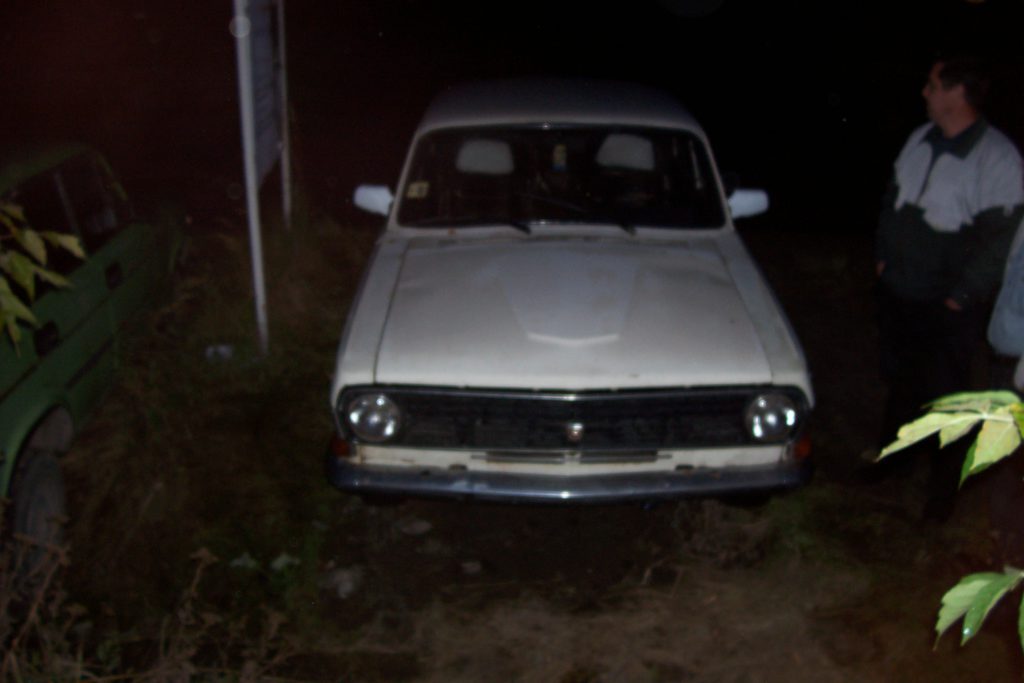
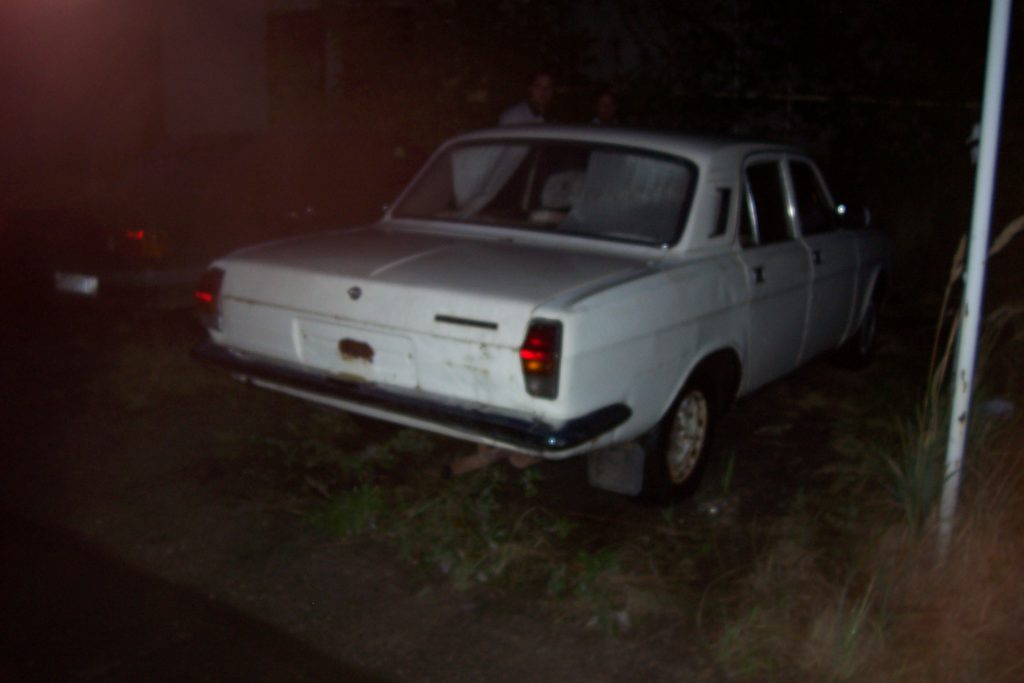
Oh, I’ve warned you, the photos are really crappy… But I just have to show these two. As you can see, outwardly this is just you regular GAZ-24-10 Volga. Appearances are often deceiving…
The two guys on the right. If you are interested. The owner of the car and my Dad.

Now, to the more interesting parts. This photo is off-focus – again, sorry about that. At least, you can see clearly that it is a V8… and some details of the layout under the hood.
Yeah, I know, should’ve taken some photos of the serial number data plate. I didn’t… not even sure if it existed at all. Don’t even remember the year of manufacture. Shame on me…
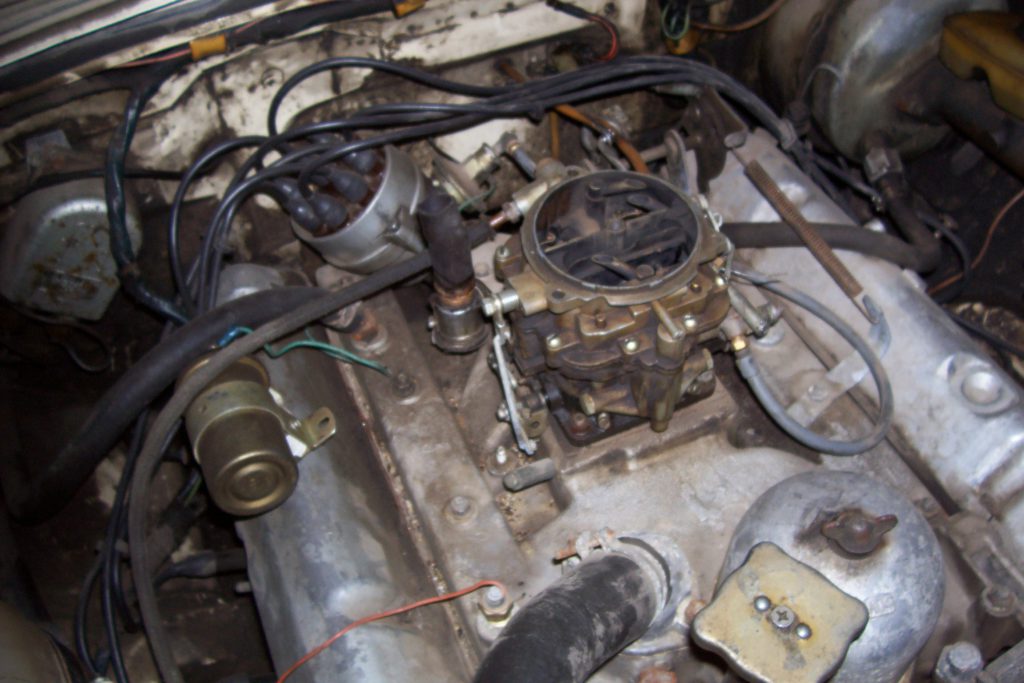
Some details are visible here. This V8 engine is a late one (can’t remember the exact model… must’ve been ZMZ-503, though !). Closed crankcase ventilation, cast aluminum valve covers, etc.
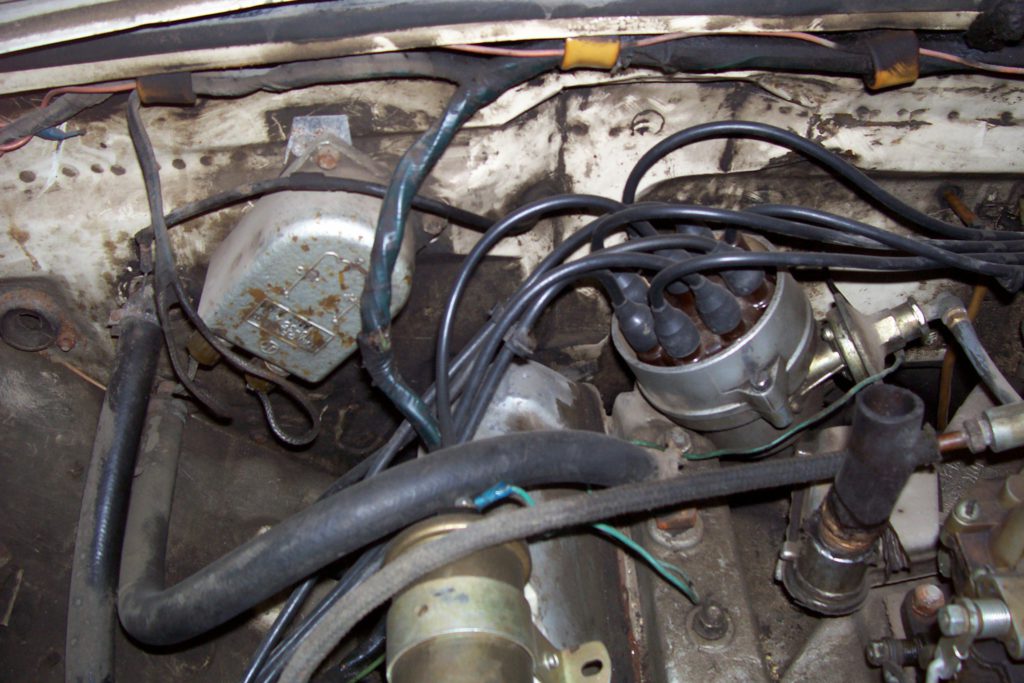
More interesting details. Look at the distributor. It seems that this car still had some remnants of the original ignition system that was shielded against Electromagnetic Pulse. A common thing for the Soviet military vehicles (nuclear warfare and all…).
That… round-ish silvery thing on the left… I wasn’t completely sure what it was, but it definitely looks like some piece of military equipment. Some Googling revealed that this is a military FR-series Radio Frequency Interference Filter. Cool.
The “civilian” ignition coil on the valve cover is obviously a later add-on.

GAZ-13 Chayka 4-barrel carburetor, K-114 model. Nothing special about it other than the prodigious amount of grit and dirt.

Now, to the interior. Once again, abysmally poor photo. But, anyway, there is nothing special about it – just a normal 24-10 Volga interior…
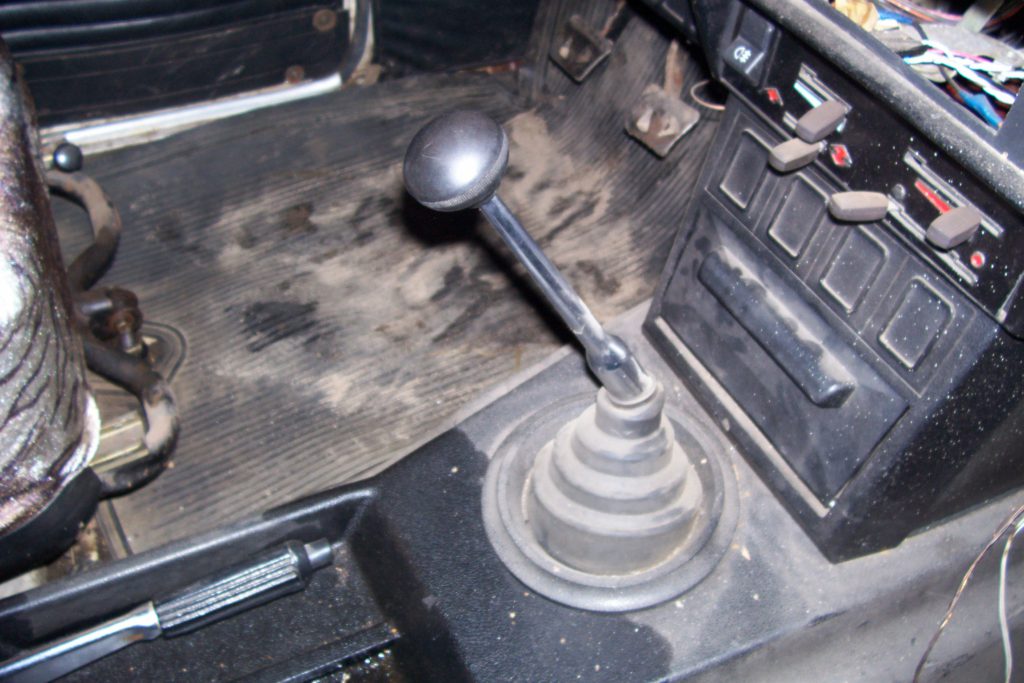
But wait !.. Why is this shifter bent at such an awkward angle (normal Volga manual transmission shifter is absolutely straight) ?
Right: this car has a 3-speed automatic transmission. Shift pattern is R-N-D-L (I’m almost sure there was no Park, which is typical for these old GAZ transmissions). Simple enough so you don’t need marked positions, just pull it back one click and go.
The early version of this transmission started in second while in D, so you had to shift into L to engage the first gear. Essentially it was a two-speed automatic transmission with a manually engaged low gear. This is most likely an upgraded version which always starts in first gear and shifts through all three available gears while driving. Still behind the time though, as most foreign cars at the time already had four-speed transmissions with overdrive.
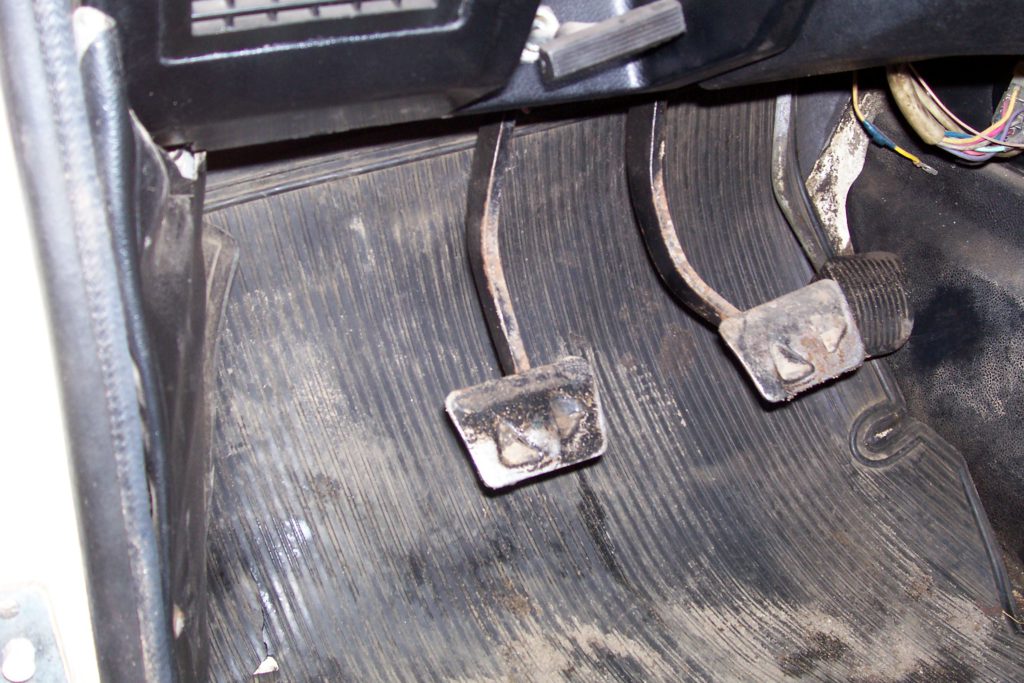
These two pedals look pretty normal… Unless you know that both are brake pedals… no clutch pedal in an automatic transmission car, obviously. Just look how badly worn they are. This car must’ve been through a lot.
You may ask, why didn’t they put a manual transmission into it ? Well, first of all – they didn’t have a suitable one. The four-speed gearbox that was used with the four cylinder engine just wasn’t strong enough (as all too many would-be hot rodders found out the hard way), and the only other option readily available was the truck gearbox with non-synchromesh first and second gears. And remember, these cars were not designed for stoplight drag racing. They were meant to be highway cruisers, capable of going over 150 km/h for all day while accompanying V.I.P. motorcades. In fact, the automatic was a nice bonus for the drivers and in no way an impediment.

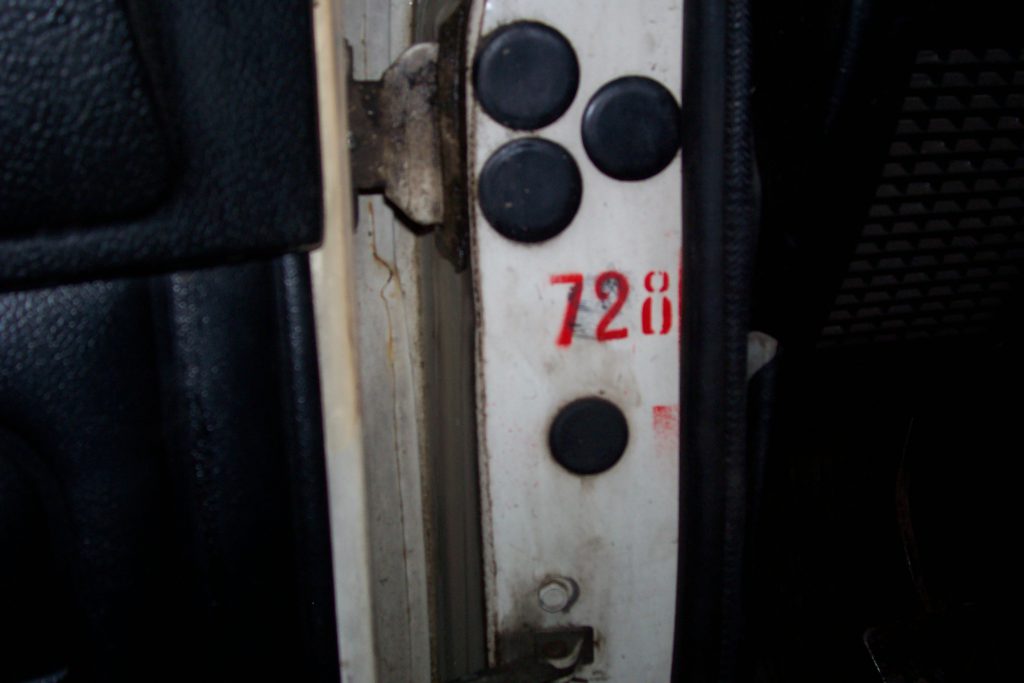
More interesting details. This is some kind of an inventory number. Remember, these cars were all originally assigned to some vehicle fleets. There are several of these all over the car.
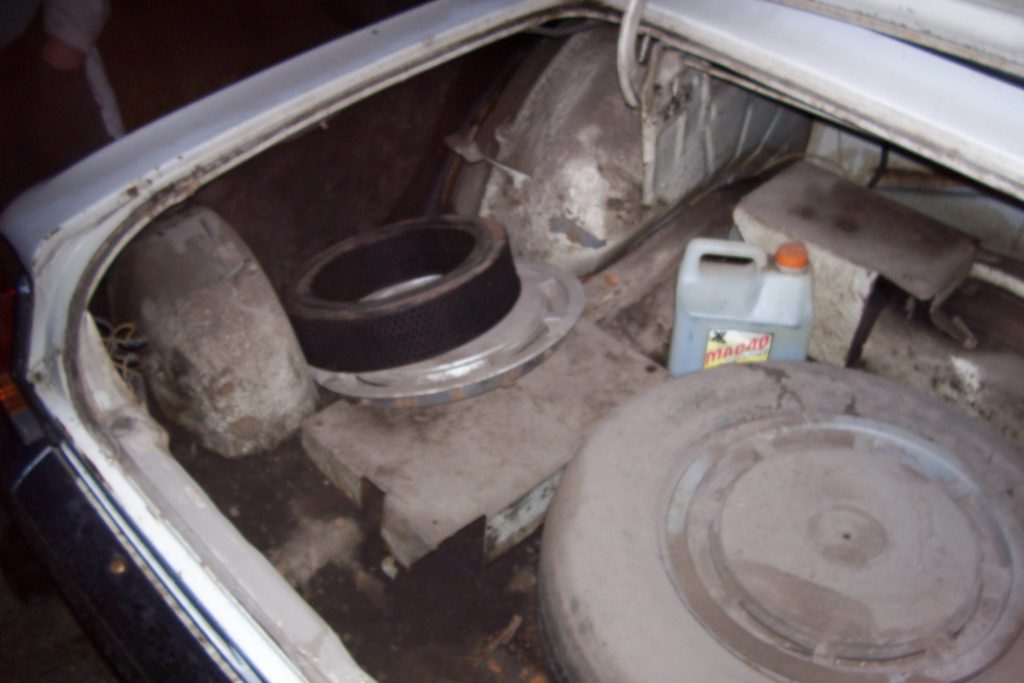
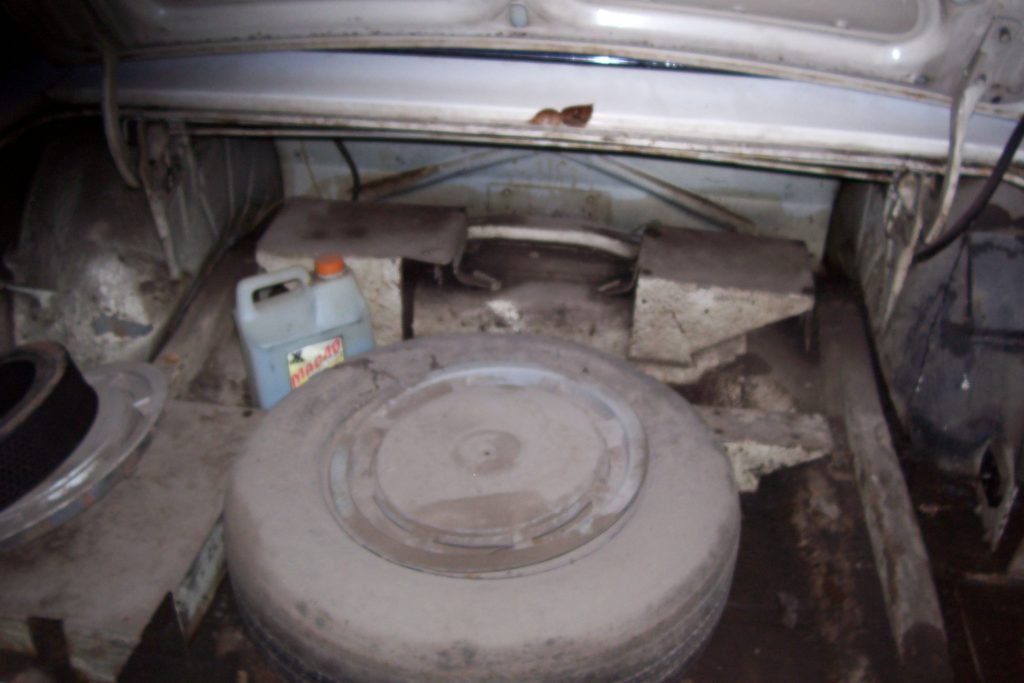
There are several pedestals for some kind of special equipment in the trunk. The common version (probably I should say, legend) is that the pedestal shown on the second photo is for a concrete block, used to provide some additional traction in winter. Doesn’t seem to be the case, though…
Another version (much more realistic) is that it is a pedestal for a mobile radio telephone. Not a modern cell phone, mind you – a big, chunky 1970s style car phone with an external transceiver in the trunk. The handset, the control head and the loudspeaker would be located between the front seats. Something like this.
According to the owner, the pedestal on the right (not visible) was for a secondary battery.
Should’ve bought this car when I had the chance, lol.
